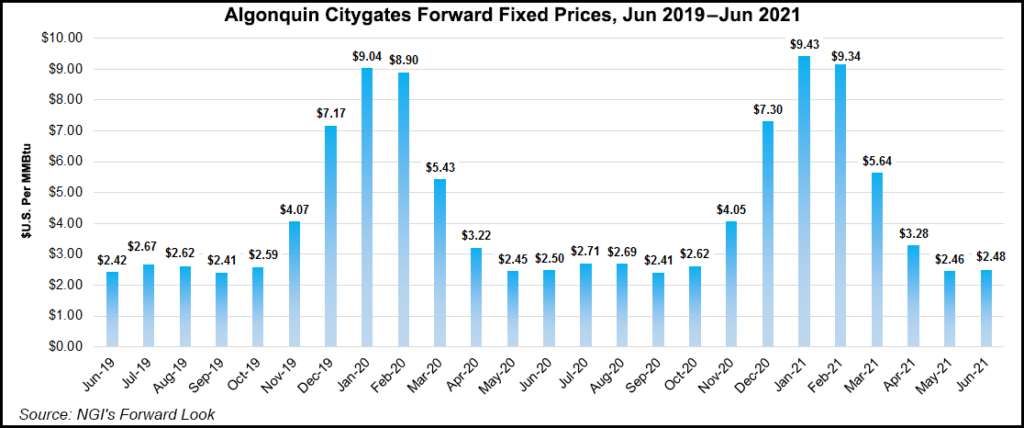NGI The Weekly Gas Market Report | Infrastructure | Markets | NGI All News Access
Northeast Forecast to Meet Power Demand Under Summer’s Hottest Scenarios
Electric grid operators in the Northeast will have no problem meeting summer demand even in the most extreme weather conditions as new supplies, including natural gas-oil generation plants, and demand-response resources enter service.

More than 32,000 MW of capacity is expected to be available to meet consumer demand for electricity in the Independent System Operator-New England (ISONE) territory. Under typical weather conditions, electricity demand is forecast to peak at 25,323 MW. Extreme summer weather, such as an extended heat wave, could push demand up to 27,212 MW, the ISONE said in its summer forecast issued on Wednesday.
Last summer, New England demand for electricity peaked on Aug. 29 at 25,899 MW, the highest in five years. The all-time record was set on Aug. 2, 2006, when demand reached 28,130 MW after a prolonged heat wave.
The ample supply projected for this summer is made up of new resources totaling 1,185 MW, including three dual-fuel power generation plants capable of using either natural gas or oil. Meanwhile, the Pilgrim Nuclear Power Station, a 680 MW plant in southeastern Massachusetts, will permanently retire at the end of this month.
In addition to the new generation units, five grid-scale solar facilities are expected to add nameplate capability of about 87 MW, with one new wind farm and increased capacity at another adding about 44 MW of nameplate capability, the ISONE said.
The grid operator’s forecasts also incorporate the demand-reducing effects of about 2,900 MW of energy efficiency measures, an additional 200 MW reduction from 2018. They include a reduction of more than 700 MW during the peak hour that can be expected from the region’s behind-the-meter solar photovoltaic (PV) installations, an additional 100 MW reduction from last year.
In New York, 42,056 MW of capacity will be on hand to meet summer demand, according to a report by the New York Independent System Operator (NYISO). Although a few megawatts shy of last year’s total available resources, the total capability is far above the projected peak demand of 32,382 MW this summer.
The NYISO is required to have 37,887 MW of capacity available for the summer, so the actual reserves represents a surplus of more than 4,000 MW.
While summertime demand is expected to be lower than last year across the Northeast, the region is expected to see its first heat wave in the coming days. The latest weather models continue to add demand, bringing total gas-weighted degree days solidly above average, according to NatGasWeather. “Hot temperatures continue to gain from Texas to the Mid-Atlantic Coast, where highs of 80s to lower 90s will rule.”
© 2024 Natural Gas Intelligence. All rights reserved.
ISSN © 1532-1231 | ISSN © 2577-9877 | ISSN © 1532-1266 |
